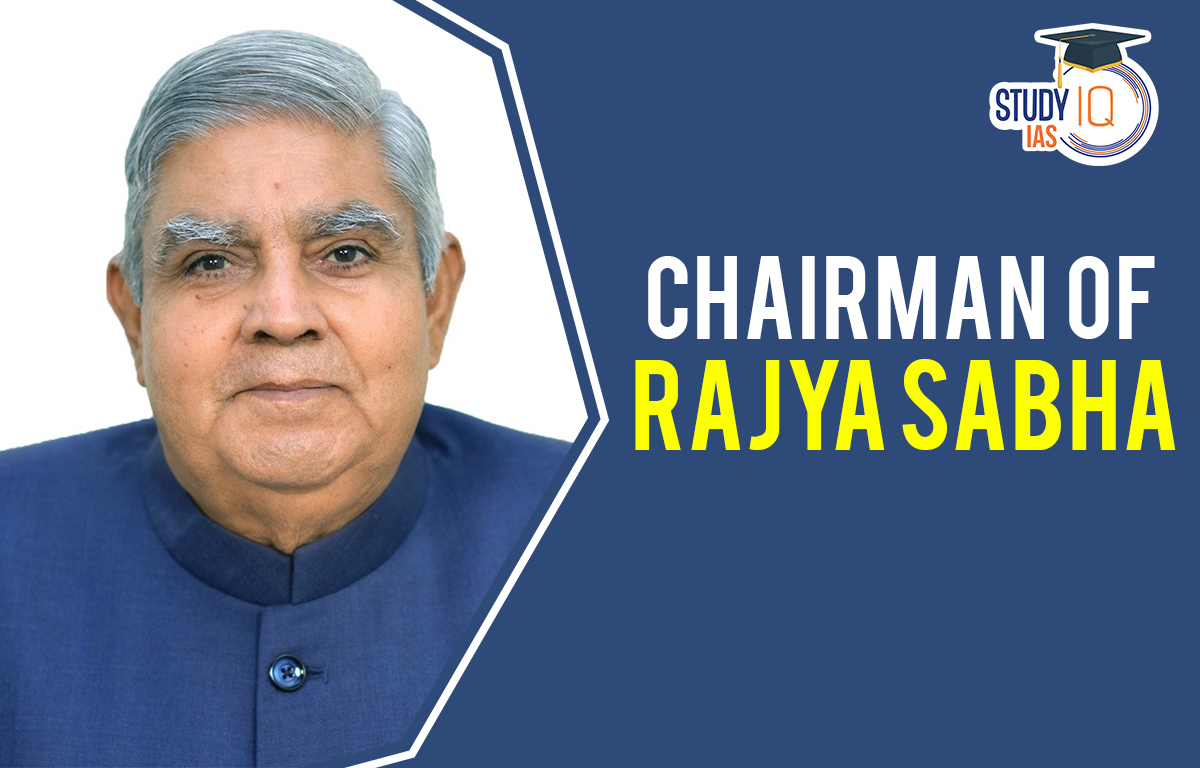Table of Contents
Chairman of Rajya Sabha
The Chairman of the Rajya Sabha is its presiding official. Ex-officio Chairman of the Rajya Sabha is India’s Vice-President. In essence, he is not a member of the house and is not required to vote until there is a tie. For the purpose of preparing for the UPSC IAS test, this article describes the Chairman of the Rajya Sabha. The Chairman of Rajya Sabha is an important part of Indian Polity which an important subject in UPSC Syllabus. Students can also go for UPSC Mock Test to get more accuracy in their preparations.
Chairman of Rajya Sabha About
The presiding officer is the Chairman of Rajya Sabha. The ex-officio Chairman of the Rajya Sabha is the Vice-President of India. When the Vice-President assumes the role of President or performs the duties of the President, he is not also the Chairman of the Rajya Sabha. The Vice-President must also be removed in order to remove the Rajya Sabha Chairman from office. As presiding officer, the Chairman of the Rajya Sabha shares the same duties and rights as the Speaker of the Lok Sabha.
Chairman of Rajya Sabha Power and Functions
In the case of a lack of quorum, the Rajya Sabha Chairman has the authority to adjourn the House or suspend its proceedings. The Tenth Schedule of the Constitution grants the Chairman the authority to decide whether a Rajya Sabha member should be disqualified for defecting; the Chairman does not participate in House proceedings outside of the performance of his duties as the Presiding Officer.
The Chairman may also call a meeting of the House before the day or hour to which it has been suspended or whenever the House has been adjourned sine die, provided that the President has not prorogued it. The Chairman’s consent is necessary in order to raise a matter involving a violation of privilege in the House. All legislative committees, whether they were established by the Chairman or the House, are under the control of the Chairman.
He suggests individuals for the various Parliamentary Committees and Standing Committees relating to the Department. He serves as the chairman of the General Purposes Committee, Rules Committee, and Business Advisory Committee. Insofar as matters in or pertaining to the House are concerned, it is the obligation of the Chairman to interpret the Constitution and rules, and no one may engage in any debate with the Chairman regarding such interpretation.
The Chairman is primarily in charge of keeping the House in order, and in accordance with the rules, he has been granted the necessary disciplinary powers for this reason. The Chairman certifies a Bill with his signature when it has been approved by both Houses and is in the Rajya Sabha before presenting it to the President for approval.
The Chairman is one of the members of the Committee that selects the Chairman of the Press Council, according to the Press Council Act of 1978. If there is a broad agreement in the House, the Chairman may also conduct an investigation into a topic that was brought up on the floor of the House or appoint a House Committee to look into it.
Chairman of Rajya Sabha Voting Rights
The Chairman can only cast a vote in a tie, in accordance with the Constitution’s stipulations. However, he shouldn’t preside over a session of the House if the resolution to remove the Chairman is being discussed. He is also ineligible to cast a vote in these proceedings on this decision or any other matter.
Chairman of Rajya Sabha as Spokesperson
The House’s main spokesperson and public face is the Chairman, who also speaks for the body as a whole. The Chairman delivers any communication from the President received, whether it relates to a Bill now before Parliament or not, to the House and provides any relevant instructions regarding the proceedings.
After a motion has been proposed and approved by the House, communications to the President are made through the Chairman in the form of a formal address. After being approved by the House, the Chairman delivers the Motion of Thanks on behalf of the President to the two Houses of Parliament convened together.
The Chairman notifies the relevant authorities of the House’s decisions and demands that they abide by their provisions. When necessary, he also issues warrants to carry out directives from the House.
Chairman of Rajya Sabha Removal
Chairman of Rajya Sabha can only be removed as the chairman of Rajya Sabha when he is removed from the office of Vice-President of India. While the resolution is in effect for the removal of Vice-President, he cannot preside over the house as chairman, although he can be part of the house.
Chairman of Rajya Sabha UPSC
The Chairman of the Rajya Sabha is empowered to adjourn the House or to suspend its sitting in the event of the absence of quorum. The 10th Schedule of the Constitution empowers the Chairman to determine the question as to disqualification of a member of the Rajya Sabha on the ground of defection; The Chairman’s consent is needed to raise a question of breach of privilege in the House. . Students can read all the details related to UPSC by visiting the official website of StudyIQ UPSC Online Coaching.


 List of Chief Ministers of Maharashtra F...
List of Chief Ministers of Maharashtra F...
 Indian Secularism: Constitutional Provis...
Indian Secularism: Constitutional Provis...
 India Mediation Campaign, Objectives, Pr...
India Mediation Campaign, Objectives, Pr...





















